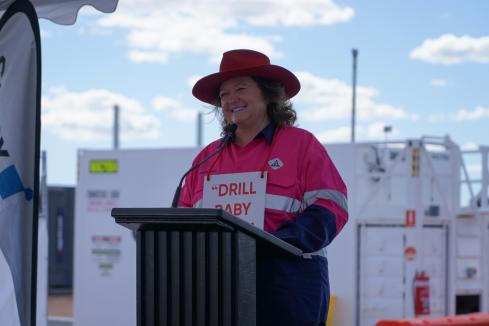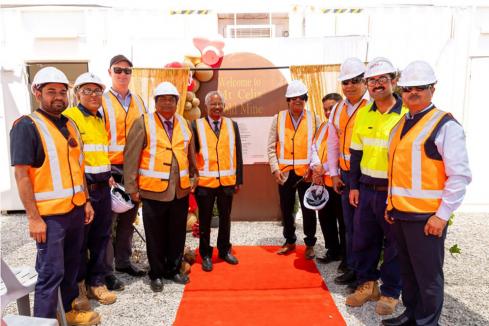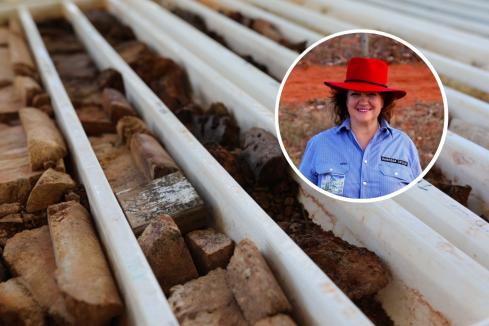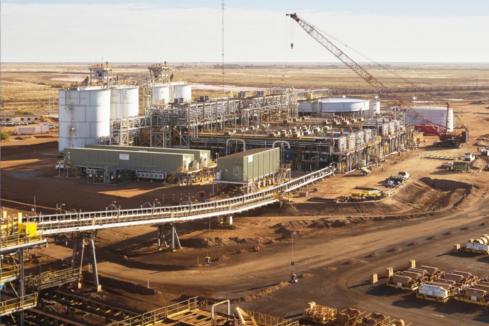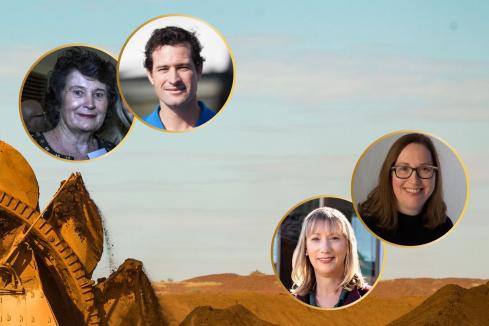Gina Rinehart has shown the dogged determination of an entrepreneur to develop the Roy Hill iron ore project.

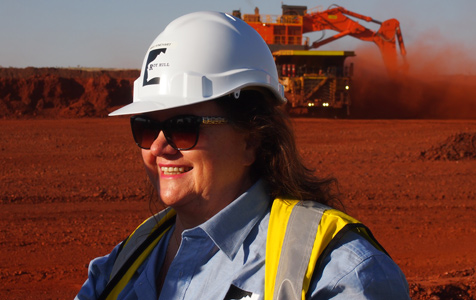
I do try to get out to most major projects at some point during their development, so I was pleased to get the chance to visit the Hancock Prospecting-led Roy Hill iron ore mine site last month to see it at a key milestone, two thirds complete.
Regrettably, mine developments are not as spectacular when they are being built as when they are operating. And, apart from sparkly newness of some of the facilities, most mines' awe factor comes with maturity when a very deep hole makes you wonder at the capacity of humans.
There is surprisingly little to see at this stage of the development because much of the infrastructure is the foundational elements, roads, ramps, an airport, pads and sheds, pipelines and bore fields, and a few electrical wires.
Of course, the mine village is established, in operation and looking very comfortable as far as I'm able to compare to from my past experiences.
The main part of the impressive processing equipment is yet to arrive. Just-in-time management makes sense with such important kit.
And, of course, the big holes are missing, even though some work has started, removing overburden and creating some stockpiles.
Nevertheless, the project is there and very much going ahead; much to the annoyance, no doubt, of the doubters who thought Hancock's chair, Gina Rinehart, could not make this happen.
No matter what views people may have on Mrs Rinehart, mainly from very distant observation, she has done what few people could ever have achieved.
The advantages of wealth rarely include the dogged persistence required of the entrepreneur. Of course, Mrs Rinehart has always maintained that although she started her business career with significant minerals asset base, there was a considerable debt to deal with first.
One of the things most powerful in the Roy Hill story, is that it underlines that private companies run by local individuals can create a world-class project. Mrs Rinehart's father, Lang Hancock, was thwarted by governments of his day because political leaders did not believe individuals could or should succeed.
At the Roy Hill milestone celebrations Mrs Rinehart was very much relaxed and comfortable in the company of representatives from the project business partners, financiers, special guests, some key executives and few media to observe the occasion.
If she was troubled by the past doubters or current family dramas, that was not on show.
No matter what happens with the ownership and control of Roy Hill or any other part of her business, Mrs Rinehart should rightly be remembered for achieving what very few others could have.
Western Australians ought to be grateful that she persevered. While there is much noise around the amount of iron ore being exported and its, hopefully, short-term impact on prices, the construction of Roy Hill has come at a timely point in the cycle for many other businesses.
And, when it starts operating, its 55 million tonnes per annum capacity will fuel our economy for decades, just as iron ore mining has done for half a century.
Art of the sale
Last month I attended CPA Australia's annual congress and heard former Treasury under-secretary John Langoulant speak at length on the achievements of Sir Charles Court.
While Sir Charles clashed many times with Lang Hancock over the development of Pilbara's mining industry, he was nevertheless the political leader who did the most to drive the growth of our state, be it as a senior minister and then premier.
Leadership involves taking risks and, just as his predecessor Sir John Forrest did in commissioning the water pipeline to the Goldfields in 1890s, Sir Charles pushed through the Dampier to Bunbury Natural Gas Pipeline in a deal that would be difficult to replicate these days.
Mr Langoulant reminded the audience of a quip by Sir Charles's son, Richard, who followed his father's political footsteps to become premier, as saying "the old man built it and I sold it".
I attended the 30-year celebration of the DBNGP earlier this year and can attest to Mr Court using those words.
It is a unique celebration beyond the familial element.
Too often we mark the builders of public works: those whose names are often not on the plaque laid with the foundation stone but are remembered for getting things done.
Former state transport minister Alannah MacTiernan is best remembered for the Perth to Mandurah railway and, most likely, the new football stadium will be testament to Colin Barnett long after he's gone.
But, do we remember as clearly those who sold the assets? Privatisations are often used as political weapons against their proponent yet they are equally important.
As Mr Langoulant highlighted, governments need to sell assets to raise the money to invest in the next infrastructure requirements. This recycling of assets is very important.
It has been surprising that this conservative state government has been so reluctant to go down this path, especially when it has been complaining about budget constraints for years.
Mr Langoulant had some tips for the state on some assets it could sell. An aficionado of the arts, he even suggested the state could consolidate its venues and use the money to develop a new state-of-the-art venue at Elizabeth Quay.
Now there's some brave thinking, let's have more of it.
Help Henry
Is this the next Daniel Ricciardo? If you are into motor racing, you might be interested in sponsoring a kid who has big ambitions? Check out https://www.facebook.com/HelpHenryRace









